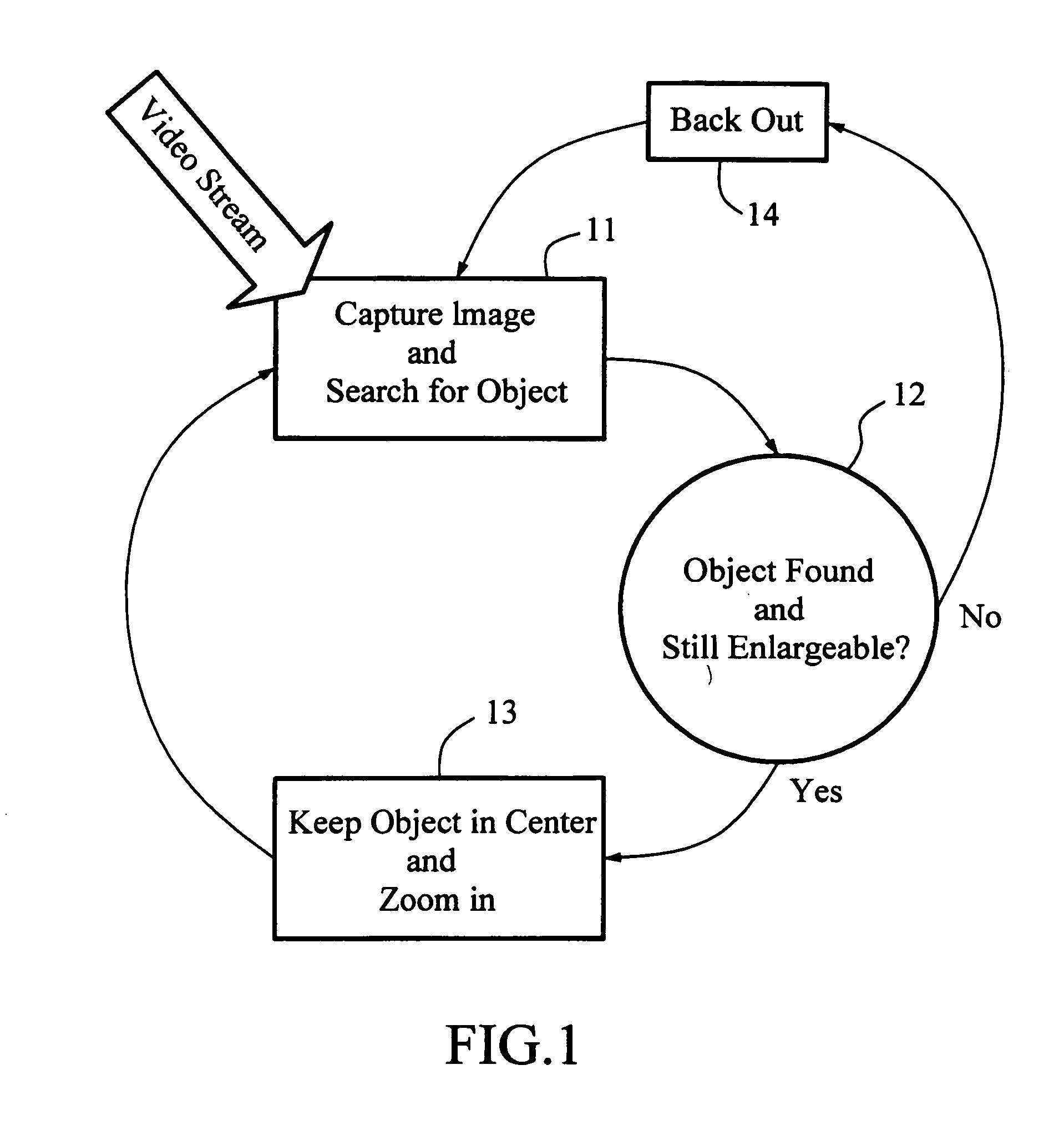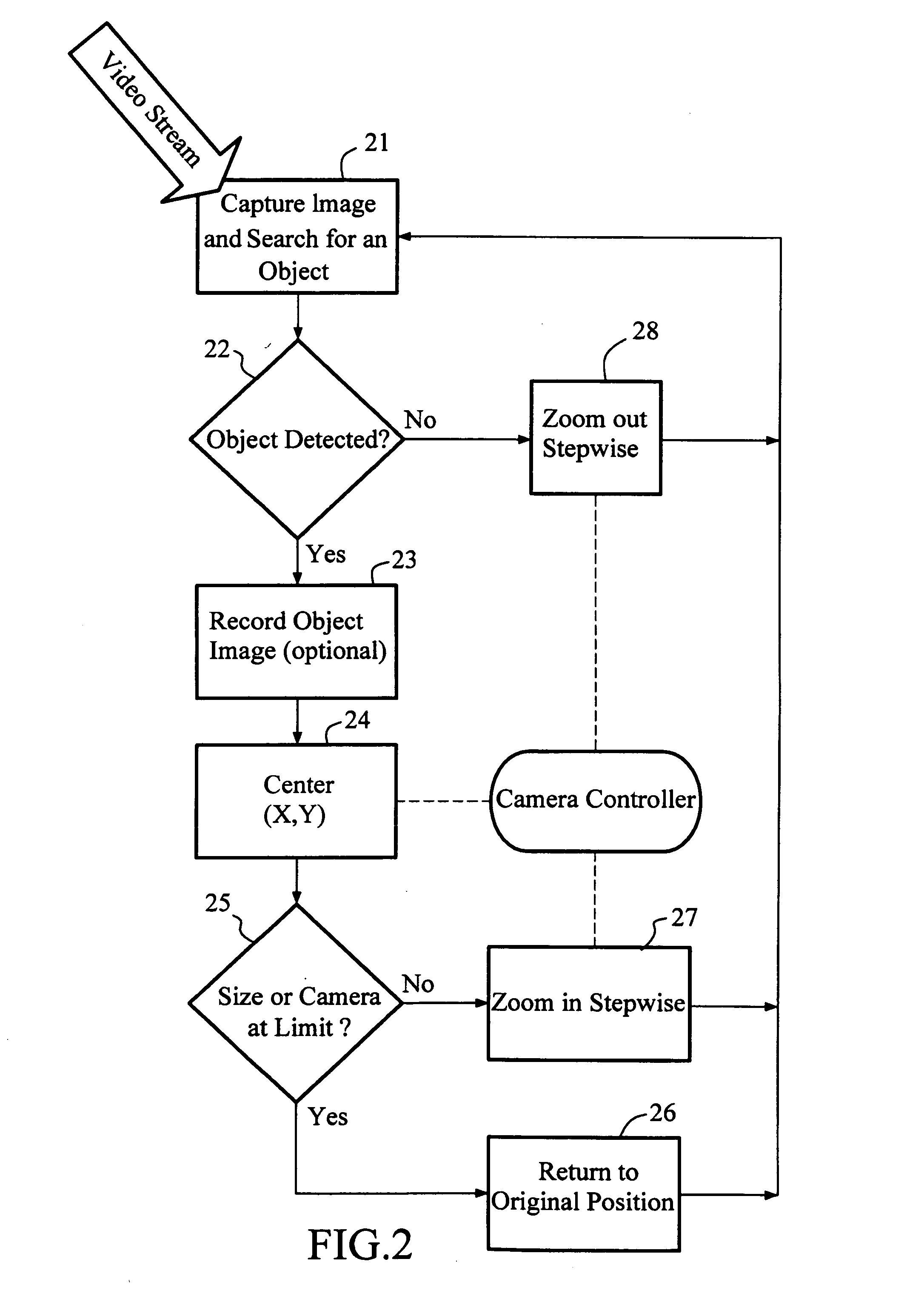Systems and methods of capturing high-resolution images of objects
- Summary
- Abstract
- Description
- Claims
- Application Information
AI Technical Summary
Benefits of technology
Problems solved by technology
Method used
Image
Examples
Embodiment Construction
[0038]The present invention is described in more detail by referring to the accompanying drawings. The drawings are to describe the preferred embodiments. However, the present invention is exemplified with several embodiments but is not limited by said embodiments. Said embodiments are to disclose the scope of protection of the present invention to persons of ordinary skill in the art in more detail.
Basic Description of Track-Zoom Function
[0039]The track-zoom function is fundamentally the reaction of a directional zoom camera to the detection of an object in a video window. The camera direction and amount of zoom are varied in order to move the object into the center of the image at the largest possible size in relation to the entire video window, or best resolution.
[0040]FIG. 1 shows a simple flow chart of the track-zoom function. The process captures images in a video stream with a pan, tilt, zoom (PTZ) camera, or a zoom camera mounted on a pan / tilt platform, and applies an object...
PUM
 Login to View More
Login to View More Abstract
Description
Claims
Application Information
 Login to View More
Login to View More - Generate Ideas
- Intellectual Property
- Life Sciences
- Materials
- Tech Scout
- Unparalleled Data Quality
- Higher Quality Content
- 60% Fewer Hallucinations
Browse by: Latest US Patents, China's latest patents, Technical Efficacy Thesaurus, Application Domain, Technology Topic, Popular Technical Reports.
© 2025 PatSnap. All rights reserved.Legal|Privacy policy|Modern Slavery Act Transparency Statement|Sitemap|About US| Contact US: help@patsnap.com



